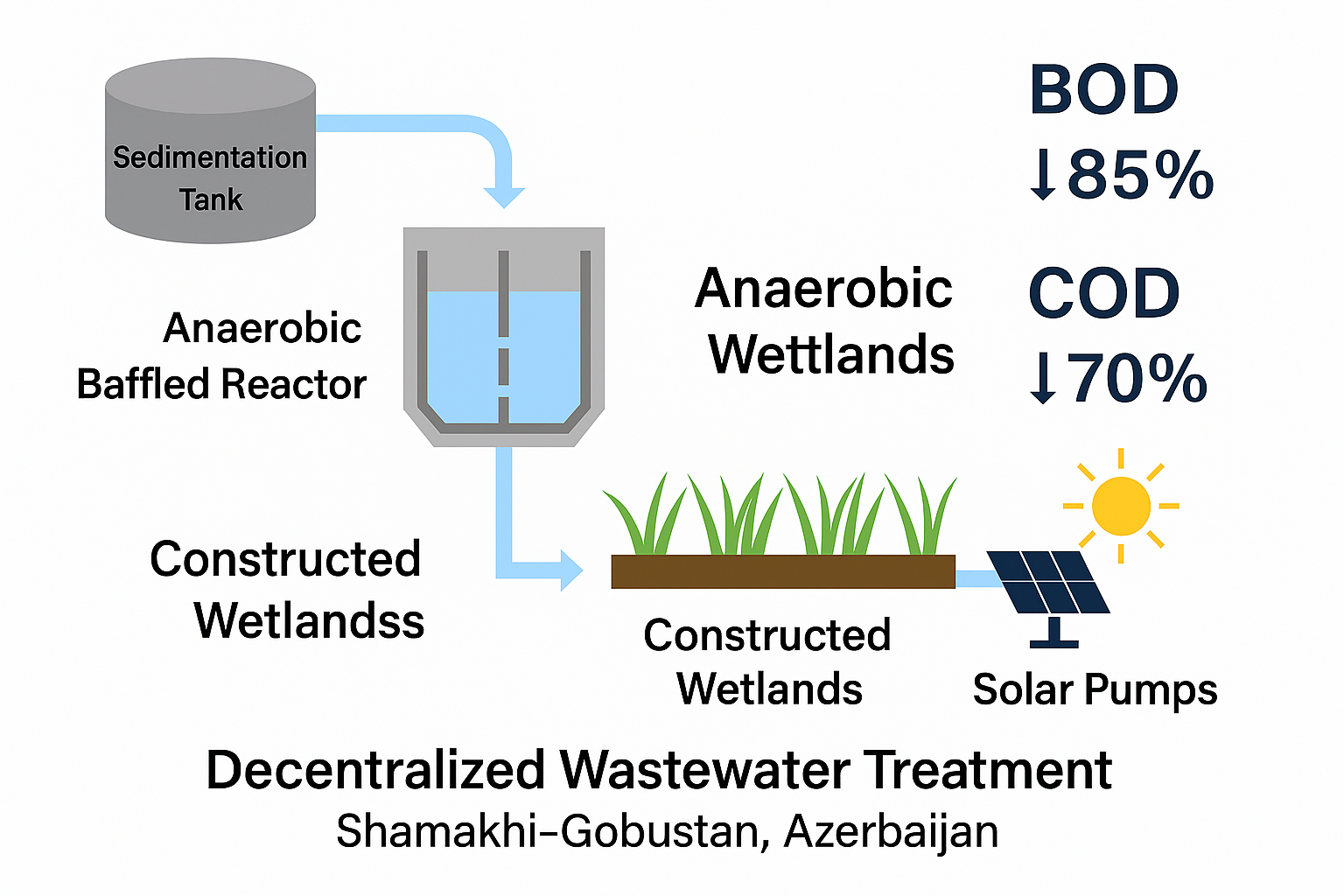-
VolumeVolume 27 (2025)
-
Issue
-
Pages1-11
- gnest_07877_final.pdf
-
Paper IDgnest_07877
-
Paper statusPublished

Safe and sustainable sanitation remains a critical challenge in rural and semi-arid regions lacking centralized wastewater infrastructure. This study assesses the environmental impacts of uncontrolled domestic wastewater discharge and introduces a decentralized treatment and performance modeling framework for the Shamakhi-Gobustan region of Azerbaijan. Field analyses detected elevated levels of BOD (18-25 mg/L), COD (45-70 mg/L), nitrates (up to 65 mg/L), and coliform bacteria (>100,000 MPN/100 mL), all exceeding WHO standards. To mitigate these risks, a pilot system integrating a sedimentation tank, anaerobic baffled reactor, constructed wetlands, and solar-powered pumps was implemented in Tekle village. The system achieved average pollutant reductions of 85% for BOD, 70% for COD, and substantial removal of nitrates and coliforms. A mass balance-based model was developed to evaluate treatment efficiency, with outputs closely matching observed data (R² = 0.94, RMSE = 4.2 mg/L COD), confirming reliability and scalability. This combined field validation and modeling approach offers a transferable framework for improving sanitation in other water-scarce regions. Beyond the local case, the findings advance Sustainable Development Goals (SDG 6: Clean Water and Sanitation; SDG 13: Climate Action) by demonstrating a practical, cost-effective, and climate-resilient pathway for rural wastewater management.
Total file downloads: 15